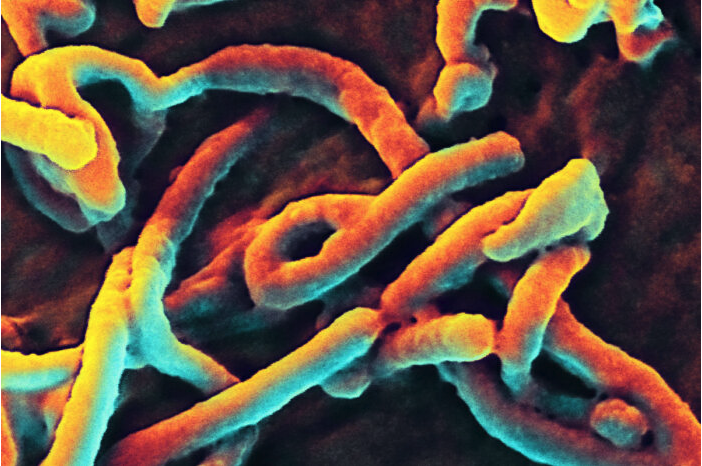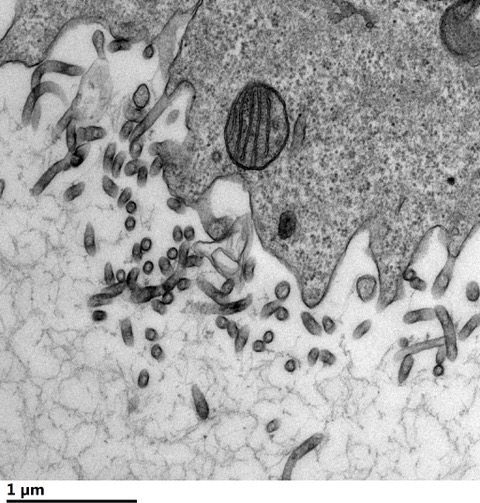The study, led by scientists at La Jolla Institute for Immunology (LJI), reveals the inner workings of viral factories, clusters of viral proteins and genomes that form in host cells.
Tag: Ebola Virus
Viruses of a feather
Helical nucleocapsids in infected cells are composed of Marburg viral genomic RNA and nucleoproteins, or NPs, that are structurally similar to those of the Ebola virus. Future drug development may be possible based on the targeting of nucleocapsid formation, which may inhibit the Marburg virus’ ability to replicate.

Rapid Ebola diagnosis may be possible with new technology
A new tool can quickly and reliably identify the presence of Ebola virus in blood samples, according to a study by researchers at Washington University School of Medicine in St. Louis and colleagues at other institutions.
Mount Sinai Research Reveals How the Ebola Virus Manages to Evade the Body’s Immune Defenses
Mount Sinai researchers have uncovered the complex cellular mechanisms of Ebola virus, which could help explain its severe toll on humans and identify potential pathways to treatment and prevention. In a study published in mBio, the team reported how a protein of the Ebola virus, VP24, interacts with the double-layered membrane of the cell nucleus (known as the nuclear envelope), leading to significant damage to cells along with virus replication and the propagation of disease.

Researchers Show How Ebola Virus Hijacks Host Lipids
Robert Stahelin studies some of the world’s deadliest viruses. Filoviruses, including Ebola virus and Marburg virus, cause viral hemorrhagic fever with high fatality rates. Stahelin, professor at Purdue University, examines how these viruses take advantage of human host cells.